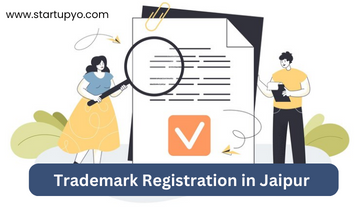About Income Tax
Income tax filing has now become easier and faster with the help of an e-filing process that is completely online. If you are concerned about the safety measures and want to take the long route by visiting the Income Tax Office, don’t worry e-filing also takes care of your safety because e-filing is not only easier and quicker but also a safe process. For every dutiful person living in India, income tax returns filing is mandatory and Indian citizens can make it possible with the help of e-filing right from their comfort zone.
Electronically Filing Income Tax Return registration or income tax E-filing registration is a process when individuals register themselves in order to file their income tax return electronically or through the internet, this whole process is known as income tax E-filing registration. This registration helps taxpayers to keep access and track all activities that are related to tax.
The main difference between E-filing and Manual filing is that when the taxpayer files their income electronically there is no chance of errors whereas in manual process chances of errors and risk are high. Section 139 (1) Act, 1961 of Income Tax deals with income tax returns.
E-Filing Types
Income tax can be filed differently, there are many ways of filing your income tax returns electronically. Below mentioned are three of the ways e-filing using Digital Signature, e-filing without using Digital Signature and e-filing through e-return intermediary.
- DSC: Digital Signature Certificate or DSC is a way to file Income Tax Returns electronically. Usage of Digital Signature Certificate (DSC) is mandatory for IT forms and there is no further action needed under DSC filing.
- ITR-V format: ITR-V filing is generated in case you want to e-file with out Digital Signature Certificate. This ITR V form need to be printed, duly signed and submitted to CPC, Bangalore. This document can be send either by speed post or ordinary post with 120 days. Once ITR-V Form is submitted there is no further action needed.
- ERI: E-return Intermediary or ERI is another way of filing income tax returns, this is done with or without DSC (Digital Signature Certificate).
Read More : What is Indirect Tax?
Requirements for E-filing registration
Taxpayers need to keep following requirements in view before starting E-filing registration:
- Register at https://incometaxindiaefiling.gov.in
- Valid Permanent Account Number or PAN.
- Valid Tax Deduction Account Number or TAN.
- Valid Address.
- Your Email Address.
- ICAI membership.
Who are Eligible for Filing
Most assessees can file tax tax returns only under a simple process
- Anyone with an income of Rs. 5 Lakhs and above
- Assets of Individual or HUF resident living outside from India.
- Ones who need to provide returns under Section 139 (4B) (ITR 7).
- Ones who need to provide notice under the Section 11(2) (a).
- Firm that does not fall under section 44AB, AOP, BOI, local authority, cooperative society
- Relief claiming person under Sections 90 or 90A.
- Resident person having account signing authority which is located outside India.
Documents Required
Every registration needs some set of documents to begin and complete the procedure, E-filing registration also needs such documents. Before you file for your income tax online, you need to be prepared with some documents in order to get started. Below mentioned details of documents will help you in the online filing of your tax returns.
General Details: You need Bank account details and PAN Number for the procedure of General details.
Required Salary Income: For the process of reporting required income, you need to be prepared with Rent receipts for claiming HRA, Form 16 and Pay slips.
Required House Property Income: For reporting house income, you need to have Property house address, Co-owner details, their property share and PAN details Certificate for home loan. Date of the completion of the construction (if purchase property was under-construction), Tenants name and rental income, in case property is rented.
Capital Gains: for reporting capital gains, you need to have a stock trading statement with purchase details, for capital gains (if property or house is sold) you need to have sale price, price of the purchase, registration details and capital gain details, statement of Mutual fund detail, equity funds, debt funds.
Other Income: for reporting other income, there is a requirement of reported income from interests, statement of bank account is required (in case interest is accumulated in savings account), reporting of saving bonds and corporate bonds interest income, reports of the income details of post office deposit.
Read More : How to Download GST Registration Certificate ?
Registration Steps
- Visit the homepage of e-Filing portal and click Register.
- Enter your valid PAN no and fill the column of Register as a Taxpayer, click validate.
[Note: an error message will be displayed in case of registered PAN or invalid PAN number]
- Fill your Basic details, your Last name, Middle and First one. Then fill the Date of Birth option, select gender and then choose Residential status as per your PAN details and proceed by clicking on the Continue.
- Once you are done with the PAN validation process, another page will appear with the name of Contact Details. Full the columns with Mobile number and belongs to, Email Address and belongs to, and landline number. Fill the Additional details in the address columns with Pincode, Post office, Locality, District, State and then proceed by clicking Continue.
- Enter OTP details, that will be sent to the Mobile number and email ID provided. Enter two separate 6 digit OTPs that you will receive on the mobile number and your email ID and continue.
[Note: OTP is valid only upto 15 minutes.
You can only enter your correct OTP in 3 attempts.
Your Screen will automatically let you know about OTP expiration countdown.
Once you click on resend OTP, you will be provided with a new OTP and you enter the new OTP not the previous one]
- Basic details and Contact details page will show up, enter the necessary details and click continue.
- Secure your account page will appear, this page will help you to set your Password, enter your password and proceed with the same password in the follow up column of confirm password. Now fill a Personalised message and Register.
[Note: Wait, don’t Refresh the page or go back.
Be careful with the new password and its privacy policy.
Your password should be strong enough, at least 8 characters or more.
Include both uppercase and lowercase letters in your password.
Add a number in the password.
Add any kind of special character also like @#$%].
- Once you are registered successfully, click down to the Proceed to Login option and get started with your login process.
[Note: Login to your e-Filing portal, update your profile and access all services available].
Read More : What is the Trademark law in India?
E-Filing Benefits
E-Filing has many different benefits, like Processing, Accuracy, Convenience, Accessibility, Receipt Proof, Easy to use, E-banking, Tracking the status, Document access, Refund procedure, Cost efficiency and much more.
Processing: Income Tax Return or ITR is a quick process. Further in case of refunds, they are processed faster than in the case of paper-filed returns.
Accurate: E-filing registration minimises the errors, it has seamless electronic connectivity and its software has built-in validations. In contrast to this Paper-filing is prone to errors and times when the Paper-filing is migrated to the electronic system, human error possibility can occur in data entry.
Convenience: One can file for E-filing registration at any place and at any time, there is no special time and place required for filing returns online. It has a 24/7 feature that means you can file anytime and that too at your convenience.
Accessibility: one can easily get access for its past data while filing for income tax returns. E-Filing applications secure your data and store it in a proper manner. Once can assess the data at the time of filing.
Conclusion
Presently the Income Tax Department of India has begun the E-filing mechanism for creating a tax system that is easy and convenient for every taxpayer. This E-filing process has made income-tax assessment very easy and has helped in curbing the errors or mistakes by its tax calculation mechanism.
FAQ’s
For what kind of procedures are documents required for E-filing registration?
E-Filing required documents for General details, Required Salary Income, Required House Property Income, Capital Gains and Other Income.
What are the different types of E-Filing?
E-Filing has three ways: e-filing via Digital Signature, e-filing without using Digital Signature and e-filing through e-return intermediary.
How do E-filing registration help the taxpayers?
This registration helps taxpayers to keep access and track all activities that are related to tax.
Of how many pages is the E-filing registration process?
E-filing registration process is of four pages.



